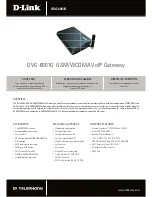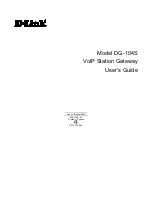
Configuring ISG Subscriber Services
How to Configure ISG Services on the Router
5
Automatic Service Activation
The Auto Service attribute, which can be configured in user profiles, enables subscribers to be
automatically logged in to specified services when the user profile is downloaded, usually following
authentication. Features that are specified by the Auto Service attribute in a user profile are referred to
as auto services. A user profile can specify more than one service as auto services.
Control Policy Service Activation
ISG control policies can be configured to activate services in response to specific conditions and events.
Subscriber-Initiated Service Activation
Subscriber-initiated service activation takes place when a subscriber manually selects a service at a
portal.
When the system receives a subscriber request to activate a service, the ISG policy engine searches for
a policy matching the event “service-start”. If no such policy is found, the policy engine will by default
download the service via the default AAA network authorization method list. This default behavior is
identical to the behavior generated by the following policy configuration:
class-map type control match-all SERVICE1_CHECK
match service-name SERVICE1
policy-map type control SERVICE1_CHECK event service-start
1 service-policy type service name SERVICE1
The same default behavior applies to subscriber logoffs, with the ISG policy engine searching for a
policy that matches the event “service-stop”.
If a policy is configured, it is the responsibility of the policy to specify how the service should be applied.
How to Configure ISG Services on the Router
There are two ways to configure an ISG service. One way is to configure a service policy map on the
local device by using the CLI. The second way is to configure a service profile on a remote AAA server.
To configure a service policy map directly on the ISG, perform the tasks in the following sections:
•
Configuring an ISG Service with Per-Session Functionality, page 5
•
Configuring an ISG Service with a Traffic Policy, page 8
•
Configuring the Default Class in an ISG Service Policy Map, page 11
•
Activating ISG Subscriber Services, page 12
•
Verifying ISG Services, page 14
Configuring an ISG Service with Per-Session Functionality
Certain types of functionality that are configured in a service must be applied to the entire subscriber
session rather than to a specific traffic flow. Services that are configured with this type of per-session
functionality must not contain a traffic class. Perform this task to configure a service policy map without
a traffic class on the ISG.
Summary of Contents for IOS XE
Page 14: ...About Cisco IOS XE Software Documentation Additional Resources and Documentation Feedback xii ...
Page 28: ...Using the Command Line Interface in Cisco IOS XE Software Additional Information xiv ...
Page 36: ...Intelligent Services Gateway Features Roadmap 8 ...
Page 46: ...Overview of ISG Feature Information for the Overview of ISG 10 ...
Page 70: ...Configuring ISG Control Policies Feature Information for ISG Control Policies 24 ...
Page 136: ...Configuring MQC Support for IP Sessions Feature Information for MQC Support for IP Sessions 8 ...
Page 224: ...Configuring ISG Subscriber Services Feature Information for ISG Subscriber Services 20 ...
Page 344: ...Service Gateway Interface Feature Information for Service Gateway Interface 8 ...
















































